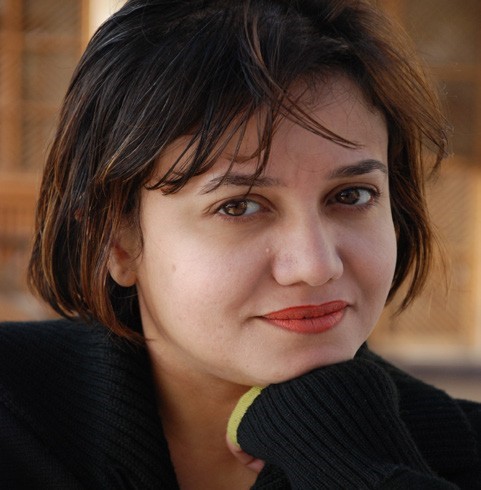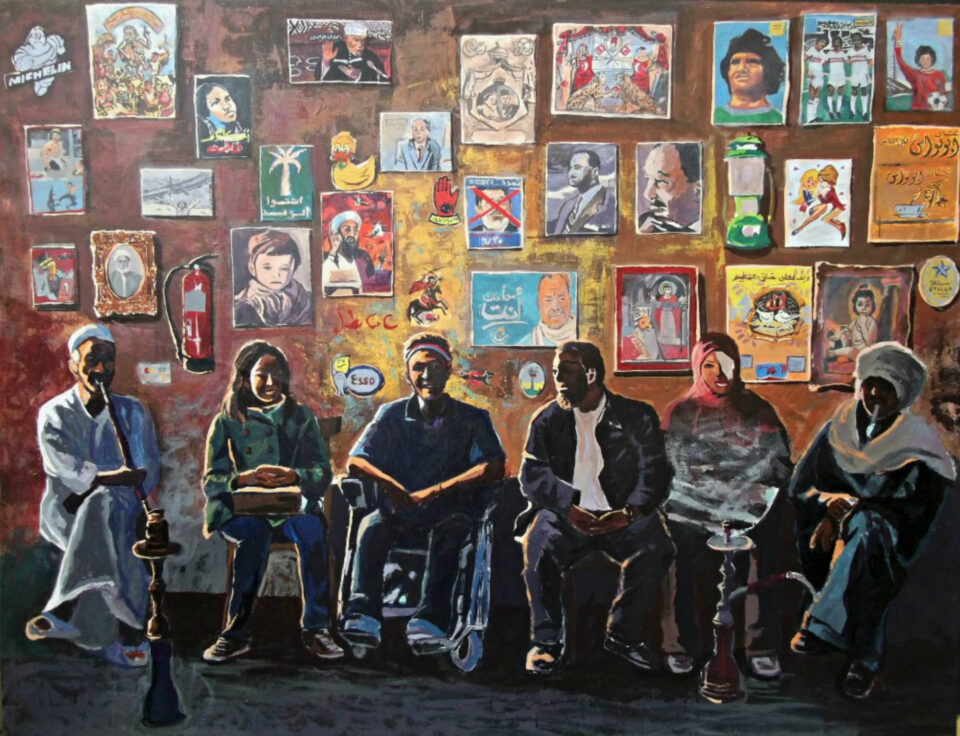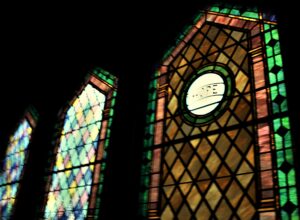Eds. Deborah A. Starr and Sasson
Somekh. Stanford, CA: Stanford
University Press, 2011.
Born in Cairo in 1917, public intellectual Jacqueline Kahanoff (née Shohet) came of age during the dawn of Arab nationalism, and although she admitted that her parents, Sephardic Jews from Tunisia and Iraq, were pro-British “as a matter of business and security,” Kahanoff and her young leftist friends were “pro-nationalist as a matter of principle.”
In 1940, Kahanoff left Egypt for the U.S., where she studied at Columbia University and the New School; after a brief stay in France, she eventually settled in Israel in 1954, nevertheless insisting that her attachment to that land owed “little to Zionism.”
A prolific writer of lucid, finely nuanced fiction and deeply personal nonfiction right up to her death from cancer in 1979, she drew on her childhood and young adulthood in early twentieth-century Egypt to develop a rich theory of “Levantine” identity and culture as an antidote to the “modern passion for monolithic unity or for a type of unity which excludes all variation.” Harkening back to a time when “Jewish communities were an integral part of the Islamic world,” Kahanoff throughout her work insists that Egypt, Israel, and all the Middle Eastern nations would benefit from a multifaceted, prismatic view of their peoples’ “multilayered identities”—“not exclusively Western or Eastern, Christian, Jewish, or Moslem.”
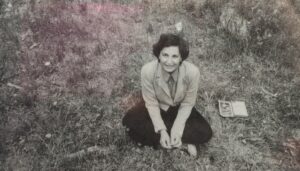
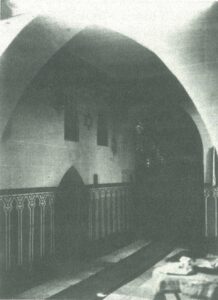
Mongrels or Marvels: The Levantine Writings of Jacqueline Shohet Kahanoff brings together a wide range of fiction and nonfiction from throughout Shohet’s thirty-year career. Kahanoff wrote all her work in English; most of it was translated into Hebrew for publication in Israel, but none of it until now had been collected and published in English. Mongrels or Marvels, while an imperfect text, allows English readers for the first time to encounter Shohet’s keen mind grappling with her memories, dreams, and reflections as she tries to reconcile the “Western superstructure” of her formal education with the “deepest sensitivities” of an “identity whose roots are not in the Western world.” Her work remains deeply relevant today as we all struggle to create an inclusive future that does not repeat the errors of the past.
Kahanoff’s first major success was the publication in 1946 of a short story in the Atlantic Monthly, the second-place winner of a contest to encourage new fiction. The story, “Such is Rachel,” introduces themes that were to persist throughout Kahanoff’s career: the celebration of an indigenous Arab Jewish identity; a deep feminism that claims a redemptive role for women’s voices and women’s values within patriarchal religions and cultures; and a profound love for Egypt, “this land, half mythical, half real, where Europe, Asia, and Africa confronted one another.” “Such is Rachel” made its way into Kahanoff’s autobiographical novel, Jacob’s Ladder, published in 1951. The novel focuses on the childhood and adolescence of Rachel, a Jewish girl in Egypt whose British governess seeks to make her ashamed of being like a “native woman”; Rachel, inspired by the crowds chanting “Egypt for the Egyptians,” succeeds in casting out the “invader,” though she remains confused about her own identity. Two chapters from Jacob’s Ladder are included in Mongrels or Marvels, along with additional chapters from an unfinished novel, Tamra, exploring even more fully the questions of identity broached in Jacob’s Ladder. In one of the chapters, Alexandria, the young Jewish heroine, now ashamed of her class privilege in an Egypt in which so many people suffer, falls in love with a Muslim boy.
Kahanoff is best known for her cycle of four autobiographical essays, A Generation of Levantines, published in Israel in 1959. In these essays, she builds up a portrayal of the complex Levantine world within which she grew up, criticizing Israel for its European orientation and racial prejudice—not only against Palestinian Arabs but also against Middle Eastern Jews. In one of the essays, Rebel, My Brother, Kahanoff relates how her family was intimate with Algerian independence fighter (and later president) Ahmed Ben Bella, as well as with Habib Bourgiba, leader of the independence struggle in Tunisia. She thus suggests that her family’s allegiance—despite its European education and class privilege within Egypt—was to the Arab culture within which it was nurtured.
For me, Kahanoff’s best work is her latest, and I was most deeply moved by her 1976 short story, To Remember Alexandria, and the two essays written after President Anwar Sadat’s 1977 visit to Israel—My Brother Ishmael: On the Visit of Anwar Sadat, and Welcome, Sadat. In the short story, Kahanoff envisions a brief love affair between a forty-year-old Alexandrian Jewish woman and a young Ashkenazi Israeli pilot. Antonia, the older woman, longs to “plant a seed of Alexandria in the soil of Israel,” bringing a vision of a more inclusive civilization to the nation built by Russian and Polish Jews with little feeling for the culture within which they were living. She extols the “mythical dimension” of both Israel and Egypt, claiming that both nations “partake of a mythical reality, another dimension of being, rooted in eternity.” The young man allows himself to love her.
In My Brother Ishmael, Kahanoff uses the Abrahamic myth of the sacrifice of the eldest son (Isaac/Israel or Ishmael) to understand the conflict between Judaism and Islam, Israel and the Arab nations, arguing that Sadat is the “first to have radically departed from the patriarchal tradition which says that only one son, the eldest, has rights.” In Welcome, Sadat, she offers the Biblical figure of Joseph as a more “judicious, good-hearted, and intelligent” hero than the “hot-tempered and harsh” Moses. Not the ancient Exodus of the Israelites from Egypt but their fruitful sojourn there is what Kahanoff remembers and hopes will provide a model for the future. And in this volume’s Afterword: From East the Sun, a previously unpublished essay, she extends her re-envisioning of Biblical models to include Sarah and Hagar—“rivals and victims within the framework of a patriarchal society” but capable today of “establishing a new covenant for themselves and their children.”
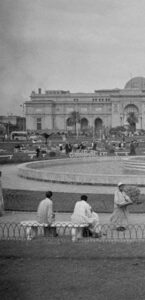

“We think back through our mothers if we are women,” Virginia Woolf wrote in A Room of One’s Own. For me, discovering Jacqueline Kahanoff was discovering an empowering mother, offering me entrance into a world my own mother—an Egyptian Jew of Kahanoff’s generation, but neither a writer nor a radical—could not provide. Kahanoff’s work opens up the world of Egyptian Jewish life in the first half of the twentieth century in a critical, analytic way that none of the more recent memoirs—by writers such as André Aciman, Lucette Lagnado, Colette Rossant, Jean Najjar, and Gini Alhadeff— offers. And whether we are Jewish, Muslim, or Christian, Kahanoff’s work points us towards a future that draws on the best of the past even while rejecting the imperialism, colonialism, racism, and sexism that also shaped that past.

